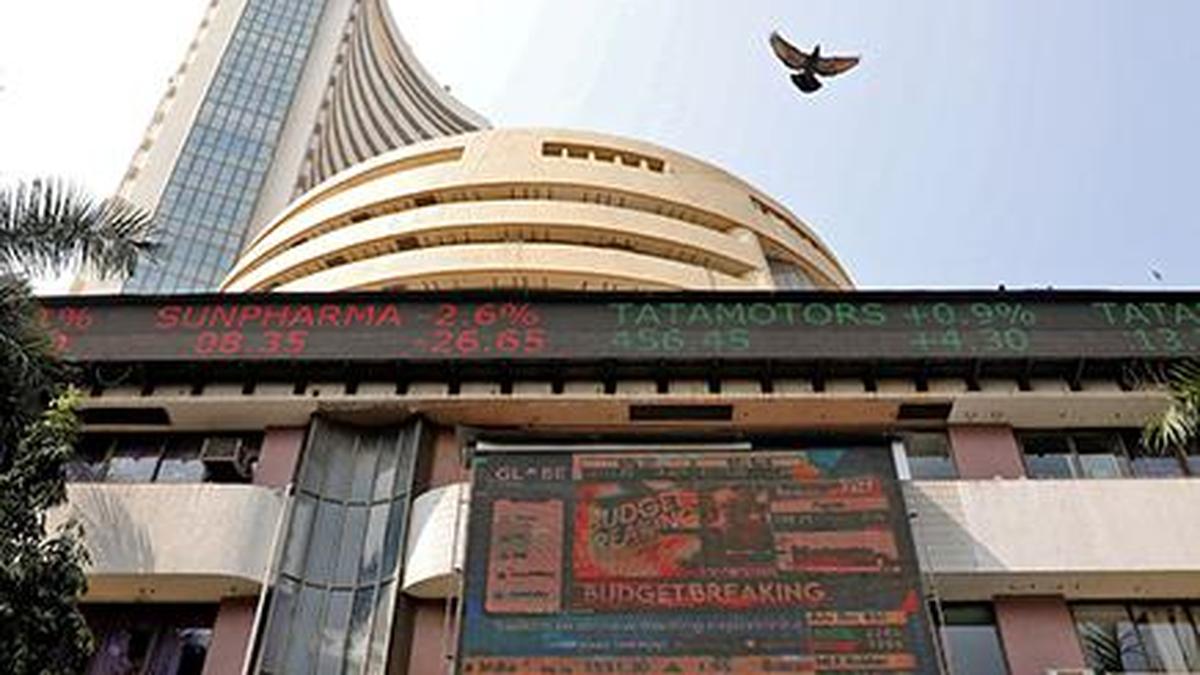Investor sentiment towards Indian equities remains robust despite foreign portfolio outflows, with increasing participation in the market. However, according to Neelkanth Mishra, Chief Economist at Axis Bank, a sustained market uptrend hinges on earnings stability and liquidity improvements.
Speaking on the side-lines of Axis Capital India Flagship Conference, Mishra underscored the critical role of earnings stability in determining the trajectory of Indian equities. While investor interest in the market remains intact—evident from strong participation despite Foreign Institutional Investor (FII) outflows—the lack of consistent earnings growth poses a challenge to a sustained market uptrend.
Many institutional investors remain cautious, believing that further downward revisions to earnings are likely before the market can become structurally attractive. Some investors at the Axis Bank conference anticipate that stabilisation in earnings cuts may not occur until mid-2025, with May-June seen as a potential turning point.
Mishra stated that if the economy rebounds financials will play a crucial role in facilitating increased loan growth. In this context, he suggested that financials could be a strong investment choice if credit growth picks up.
Below are the excerpts of his interview with CNBC-TV18.
Q: How have been the interactions, as far as the various investors are concerned, and what is your current take, as far as markets are concerned, especially in the context of valuations?
A: The conference has gone on very well. There has been very strong interest from investors. The meetings have been very well attended. There has been significant foreign participation. In fact, one of the points I do like to make to investors is that even though the FII outflow has been quite strong over the past 5-6 months, the number of FIIs which are participating in India continues to go up, so there is still a lot of interest.
However, at the same time, I think the commentary from the companies is suggesting that the growth revival is still some time away, and some of the investors are also of the view that further earnings downgrades are necessary before the markets really become structurally attractive. There will be, I think near term ebbs and flows, wherein the markets for a few days, will be oversold, and then there will be a rebound. However, for a steady up move to happen, we need to see bottom in earnings estimates. Talking to companies and looking at what prospects are in the next three to four months, the investors feel that that a significant and a sustained rebound may not happen for a few months.
Q: If you could just elaborate a little bit more on this slower, gradual growth recovery. What exactly have companies told you across various sectors? How long will it take for them to get back to the kind of growth rates that we had say exactly a year back? What exactly is holding them back, what are the pain points and then again, even on earnings downgrades, how much more to go?
A: The companies and what they tell us is an outcome, meaning they are a manifestation of broader macroeconomic trends and I think the biggest challenge in India right now is that there is the liquidity is excessively tight. Money supply is just not happening. Even when you think about the rate cut that just happened, as we are hearing from the banks, there is some transmission that happens so the loans that were benchmarked to the repo rate will see an automatic reduction.
However, all the new loans are still going to happen at higher rates, because the marginal cost of funding today is not the repo rate. The marginal cost of funding today is the CD market, and the one-year rate on CDs is still 7.60% the gap between the one year overnight indexed swap (OIS), which is what the Treasury market thinks the repo rate will be one year ahead, and the currency rates is actually more than 1.50 percent points. When you see this level of liquidity stress, it is very hard to see the economy rebound.
Once we start to see, and this is my macro hat that I am speaking through, that once you start to see improvement, then the manifestation of that will be that companies start to see better demand, there is enough liquidity in the system, and then the earnings start to stabilise.
Q: Do you think, given the CPI inflation print that we had for January, the RBI is likely to cut in April, and can that perhaps be an inflection point to reduce the liquidity stress?
A: Rate cuts at this stage will not be very productive. In fact, they are quite ineffective because when you when I just explained that when you cut repo rates from 6.50%, to 6.25%, it marks down some of the loans that were perhaps benchmarked to the repo rate. But it does not do much more, because for new loans to go through and for new loans to get created, the marginal lending rate has to come down, and that can't happen until liquidity eases quite substantially, and banks start to get a sense that the that liquidity will be easy for a while.
Remember that the RBI is providing sufficient liquidity through the variable rate repo (VRR) route. But if you are starting to give loans, remember that banks are in the business of maturity transformation, so they have to give loans for six months, 12 months, 36 months. Unless they get comfort that liquidity is going to be easy for a while I do not think the interest rate, effective interest rates in the economy will come down as much. Therefore, for me, the most important signal, forward looking signal, will be a significant improvement and significant action from the RBI in terms of liquidity.
Q: As far as the rupee is concerned, especially in the context of the depreciation that we have seen, does that make Indian equities less palatable as far as FIIs are concerned? Secondly, in terms of the equity market, do you still feel that financials can do well amidst the tight liquidity that we are seeing?
A: The first one, remember that when we are thinking about the FIIs, it is always a relative game there is no absolute game. Most of the investing is a relative game of that matter. Therefore, the rupee on a six month, 12-month basis, has not done that much badly. It is just that there was a period of significant stress where the RBI had to intervene strongly; therefore a lot of his concerns emerged. However, a 5% depreciation when the DXY has been so volatile and has strengthened so much is not that bad. So this is not the reason why the foreign portfolio investors would find India less or more attractive.
What will help bring back confidence is that the reduction or the pace at which earnings are getting cut, like even in the December quarter results, the Nifty earnings per share (EPS) has fallen by almost 3% for FY25-26 and 27 so what this does is it cancels out the roll forward gains. Remember that FY26 and 27 EPS growths by consensus for Nifty is still 14%-15%-16% so every three months, you are gaining about 3.5 to 4% now, if that gets canceled by the pace of rate cuts, then there is no juice left in the market.
Therefore, once the EPS cut starts stabilising, and we start to see maybe a 0.5-1% kind of cut, then the market starts to move up. That is what most investors are trying to assess. Some of them at our conference feel that this may start happening only after May, June. Some think that the base effect will remain strong even after June, but I think the good leading indicator will be liquidity.
That takes me to your second question, which is on the attractiveness of financials. See when you are assessing prospects at this stage, normally, I try to be very predictive. When I am doing forecasting, what I think should happen is not very important. What is very important is what is likely to happen. In this case, it is given that there is not much room. We saw that in the budget, not much fiscal room to stimulate growth, as we are seeing, there is not much of benefit to come from directly when interest rates start getting cut, but there is a lot more to be gained from if system credit growth was to start to improve from here.
Therefore, if the economy was to revive, I think financials would be the channel through which, the pickup in loan growth would be the channel through which the economy can revive. Therefore, I think if one were to be prescriptive and expect that the right thing will be done, then financials would be a better choice.

 1 month ago
1 month ago

















